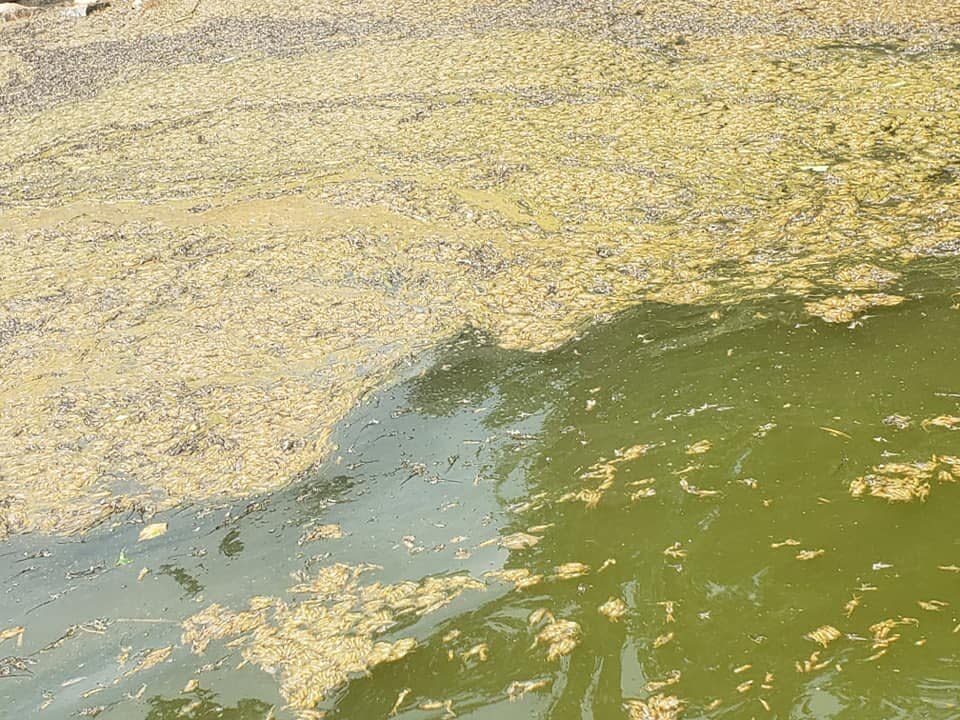Casings From Thousands of Molting Flies Pile Up on North Carolina Lake

Yadkin Riverkeeper
A suspected fish kill at a North Carolina lake turned out to be something much less alarming.
According to Yadkin Riverkeeper, the "gross" scum covering parts of High Rock Lake outside Salisbury is actually the result of thousands of molting mayflies shedding their casings.
"It's gross and scummy, but doesn't appear to be a threat to water quality," the nonprofit wrote on Facebook last week.
Photos shared by the environmental group show what looks like a yellowish-green growth "piling up at the end of a cove."
Edgar Miller, the executive director of Yadkin Riverkeeper, told Winston-Salem Journal that at first he thought it was a layer of aquatic vegetation. A closer look revealed what appeared to be decomposing minnows, though in the end, it was determined that these were the casings of a type of mayfly.
Miller added that this is a natural, normal process in the mayfly life cycle. In fact, the presence of mayflies is considered a sign of good water quality. A molting of this scale, however, is unusual.
Covering 15,180 acres, High Rock Lake is the state's second-largest lake. It forms the boundary between Davidson and Rowan counties.
Experts from the North Carolina Division of Water Resources took samples and confirmed that the casings are not a threat to water quality. It's unclear how long the molting will continue.
Wild!
